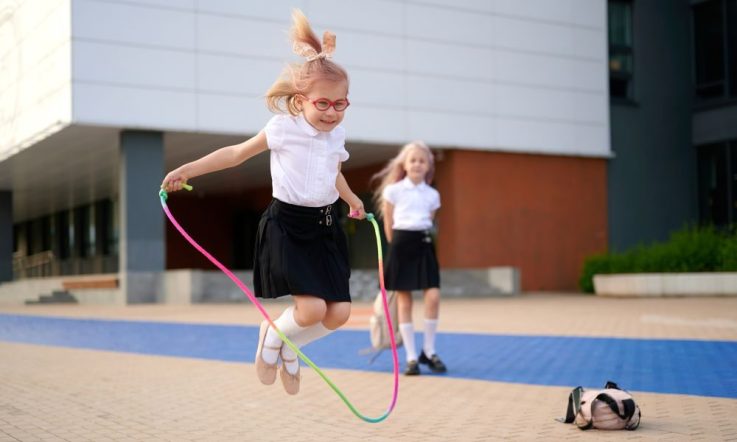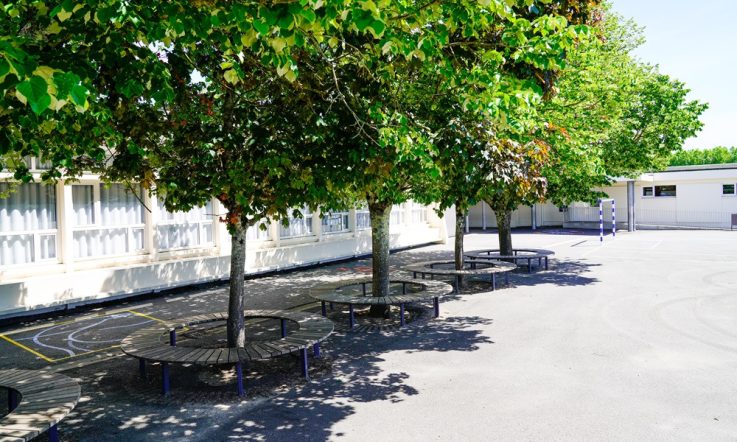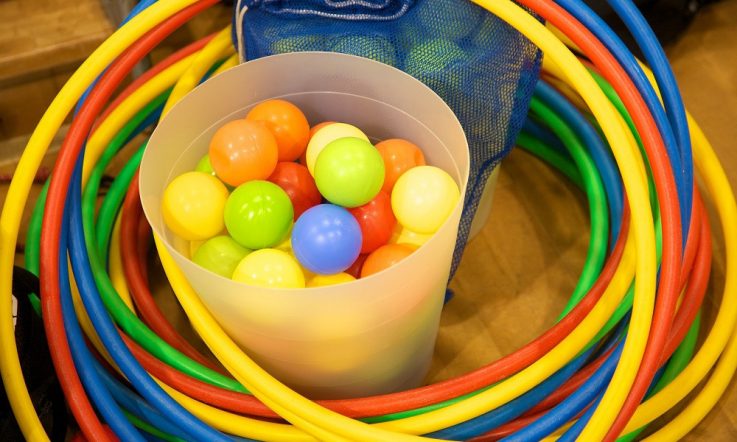St Mary's Catholic Primary School in Williamstown, Victoria, has a 10-year plan to improve its playground and outdoor spaces. The aim? To create a playground that engages more students and improves student behaviour. In today’s article, principal Anthony Hockey shares how they managed to enlist the help of British educationalist and writer Stephen Heppell to help with their plans, what the school has done to improve the playgrounds so far, and the noticeable impact these changes have already had on student engagement and behaviour.
School playgrounds are a dynamic place. When playing outside, students need to negotiate finding a space and having someone to play with, all while dodging other students, balls and equipment. For many students, going out into the playground causes great anxiety – something that they have to negotiate several times a day.
We’ve found that the challenge of finding a group and being included can sometimes lead to poor behaviour. In fact, in many schools, the playground is where students have most of their conflict. This then impacts learning as students return to class unsettled and still caught up in the conflict, leading to teachers to pull students aside to work through a resolution.
Here at St Mary’s Williamstown, around 4 years ago we decided to go on a journey to create a playground that engages more students and works from a preventative model, rather than waiting for problems to happen.
A 10-year playground plan
The first 3 years of the plan involved developing the concept and hiring the right architects and advisers to get the job done. There were a lot of steps involved to get to the point of construction.
Now in our fourth year, we have been working with a landscape architect Tim Nicholas to create the playground plan. Like every school, our budgets are tight, so we have to be strategic. We were also very fortunate to work with Stephen Heppell in the UK, the world-famous school and playground designer who kindly Zoomed us twice and gave us advice on our plans.
His advice was that we should think about engagement and prevention. ‘Don’t wait for the problem to happen, have the students engaged in a playground so they do not get in a conflict,’ he told us.
With that thinking, we came up with a plan that is creating different spaces for students to be engaged which also allows students to play beside or play quietly, without the pressure of having to find a friend to play with.
I should point out we have a very small playground, which is mainly artificial grass and asphalt, so we did not have much space to work with. Our old sandpit did not have any shade or places to sit or play. There are times where, as a leadership team, we do wonder where the money will come from, but given it is a long-term plan, we will chip away at it bit by bit.
Our plan involves:
- Resurrecting and expanding our sandpit
- Creating more green space and quieter environment
- Create opportunities for learning
- Create more seating
- Beautify the space and create meeting spaces for adults
What we have done so far
First, from Heppell’s advice, we started putting numbers on our buildings. We now have measurements that show the height of our 2-storey building in centimetres and metres. We do hope to do more of this with measuring tapes, scales, jump testers all hoping to be integrated into the plan. It seemed so obvious, we wonder why we never thought of that before.
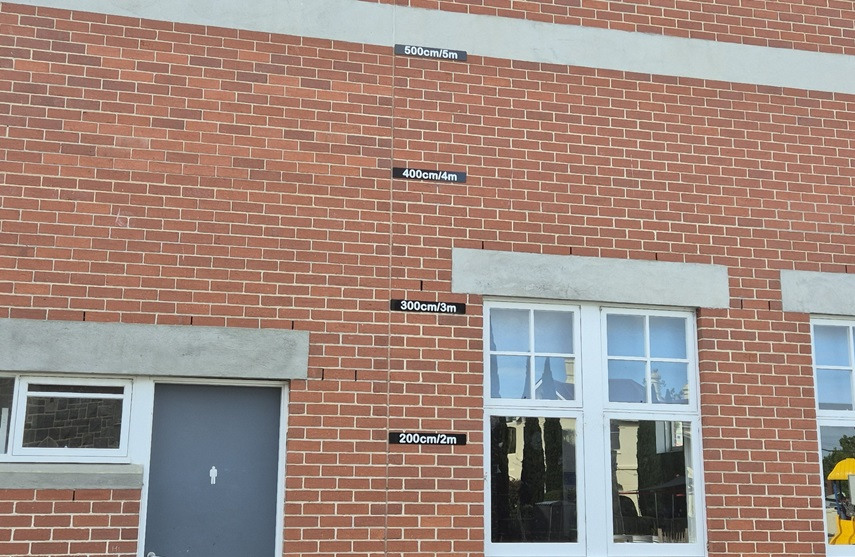
Secondly, we worked with a local artist, David Murphy, to build us a musical cubby. Our cubby can be played musically with some of our piano students able to play Beethoven on it, although most students are just happy to make some noise. It does include a drum kit, so you can imagine the noise when all of our students wanted to try it out when it first arrived.

Thirdly, we have expanded our sandpit and changed our veggie garden. Our sandpit grew 10-fold and now can incorporate many more students. It is not unusual to see 30 to 40 students in our sandpit at a time, which also includes stepping stones, climbing rocks and new plants and shrubbery. We reused flower beds from our old veggie garden to make it more accessible to students.
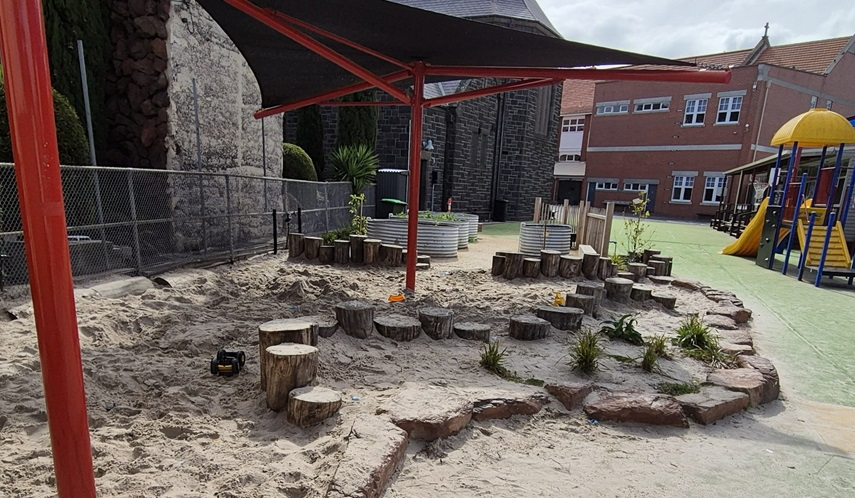
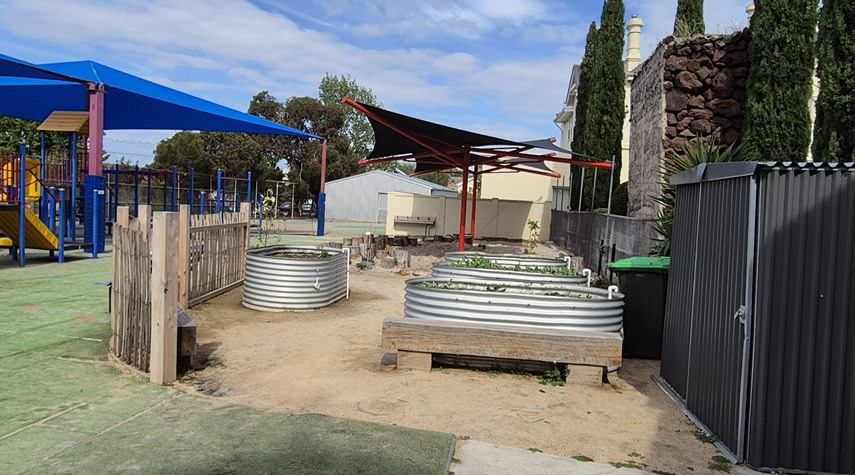
In the future, we have plans to:
- Turn a spoon drain into a lazy river
- Create a forest space and other garden area
- Create a little stage area
- Build a horizontal climbing wall
- Build a wall of bird cages
- Create a space for parents to wait
The impact on behaviour and engagement so far
What have we found so far? Simply, we have less playground conflict. Students are engaged and can find a place. Our students with sensory needs have somewhere to go, to escape to, to hide, to fit in, to be left alone.
What has been the major challenge? Money! Everything is more expensive than estimated. Our artificial grass, which we had much later in the 10-year plan, needs repairs now and that is not cheap to replace. Our playground equipment, which is 30 years old, we thought could be left for a while, still okay, but if we replace the artificial grass, it makes sense to replace the playground equipment at the same time, once again, very expensive.
My advice to other schools is to not just think about providing more sporting equipment. Generally, the sporty students are fine and will work out something to do with limited equipment. Think of the students who struggle, the ones who are alone, have sensory needs, find it hard to make friends. Give them something to do, somewhere to be, and somewhere to belong.
Make your playground a place of adventure, curiosity and learning. Make it fun. Not everything has to be an expensive purpose-built piece of equipment – a few plastic pipes and some tennis balls can entertain students for hours. Lots of schools now have old pianos in them. Just be creative and think outside the square and have some fun.
When thinking about your own school context, what are the current challenges students face in your playground or outdoor spaces? How do these impact their behaviour and learning in the classroom?
How inclusive are your play spaces for students with sensory needs, social anxieties, or those who struggle to find playmates? What could be done to better support these students?
In what ways could you incorporate learning opportunities into your outdoor spaces, similar to the measurement markings or musical cubby described in the article?

